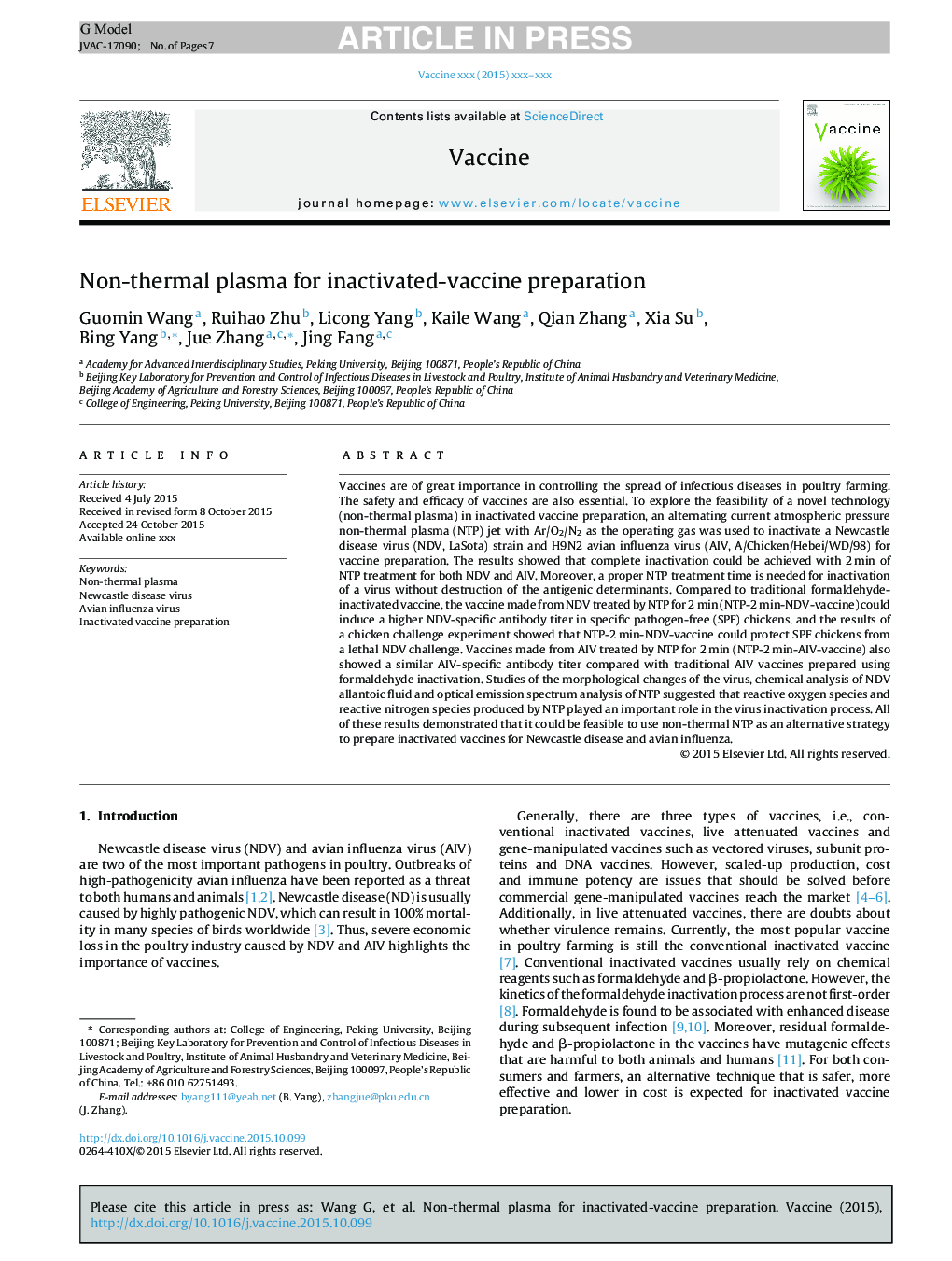| Article ID | Journal | Published Year | Pages | File Type |
|---|---|---|---|---|
| 10962847 | Vaccine | 2016 | 7 Pages |
Abstract
Vaccines are of great importance in controlling the spread of infectious diseases in poultry farming. The safety and efficacy of vaccines are also essential. To explore the feasibility of a novel technology (non-thermal plasma) in inactivated vaccine preparation, an alternating current atmospheric pressure non-thermal plasma (NTP) jet with Ar/O2/N2 as the operating gas was used to inactivate a Newcastle disease virus (NDV, LaSota) strain and H9N2 avian influenza virus (AIV, A/Chicken/Hebei/WD/98) for vaccine preparation. The results showed that complete inactivation could be achieved with 2Â min of NTP treatment for both NDV and AIV. Moreover, a proper NTP treatment time is needed for inactivation of a virus without destruction of the antigenic determinants. Compared to traditional formaldehyde-inactivated vaccine, the vaccine made from NDV treated by NTP for 2Â min (NTP-2Â min-NDV-vaccine) could induce a higher NDV-specific antibody titer in specific pathogen-free (SPF) chickens, and the results of a chicken challenge experiment showed that NTP-2Â min-NDV-vaccine could protect SPF chickens from a lethal NDV challenge. Vaccines made from AIV treated by NTP for 2Â min (NTP-2Â min-AIV-vaccine) also showed a similar AIV-specific antibody titer compared with traditional AIV vaccines prepared using formaldehyde inactivation. Studies of the morphological changes of the virus, chemical analysis of NDV allantoic fluid and optical emission spectrum analysis of NTP suggested that reactive oxygen species and reactive nitrogen species produced by NTP played an important role in the virus inactivation process. All of these results demonstrated that it could be feasible to use non-thermal NTP as an alternative strategy to prepare inactivated vaccines for Newcastle disease and avian influenza.
Related Topics
Life Sciences
Immunology and Microbiology
Immunology
Authors
Guomin Wang, Ruihao Zhu, Licong Yang, Kaile Wang, Qian Zhang, Xia Su, Bing Yang, Jue Zhang, Jing Fang,
